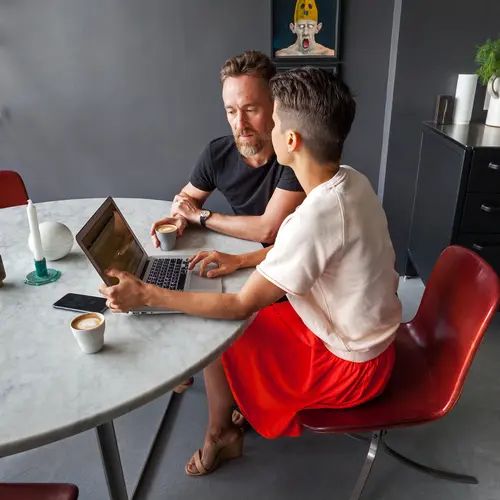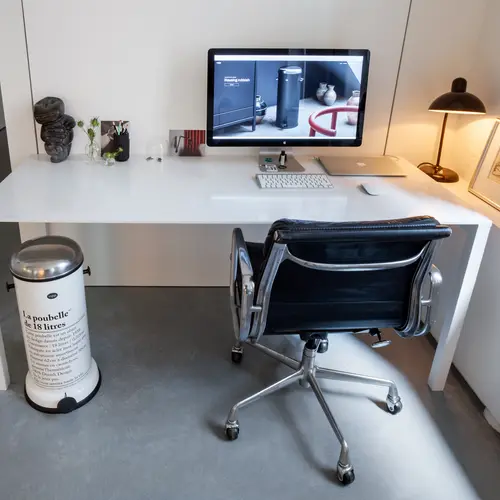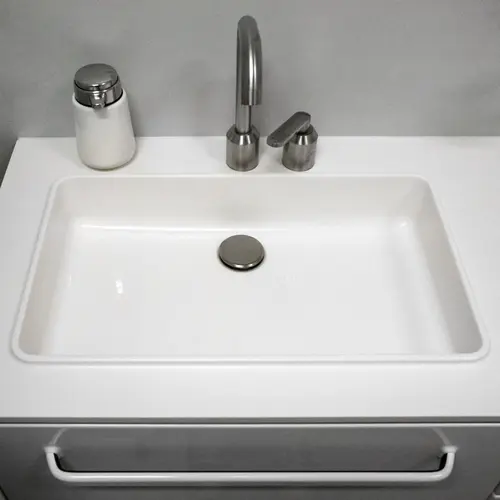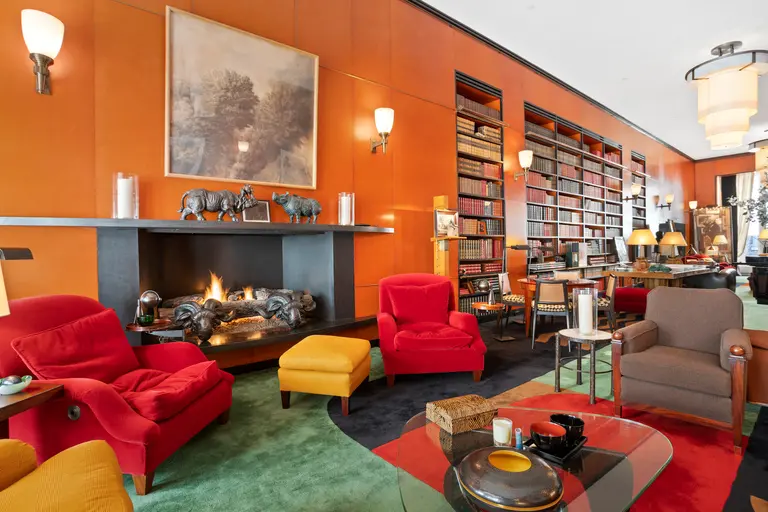Our 1,600sqft: Inside the Tribeca live-work showroom of Vipp, a Danish ‘tool building’ company

6sqft’s series “Where I Work” takes us into the studios, offices, and businesses of New Yorkers across the city. In this installment, we’re touring the showroom-apartment of Tribeca’s Vipp, a third-generation Danish company. Want to see your business featured here? Get in touch!
Nearly 80 years ago in Denmark, Holger Nielsen designed a trash can with a pedal for his wife Marie’s hair salon. Despite having no intention of selling it, demand grew for Nielsen’s sleek, and hygienic, trash bin and it became a fixture in Danish clinics, and later home use, over the next several decades. Nielsen called the bin “Vipp,” Danish for tilt, which describes the lid’s movement. In 2009, the design was accepted into the permanent design collection at MoMA.
Today, Vipp is a third generation family-owned company run by Nielsen’s daughter, Jette Egelund, and her two children Kasper and Sofie. In addition to its classic bin, Vipp now offers a wide range of lifestyle products, from entire kitchens and bathrooms to tableware and lighting. Based in Copenhagen, Vipp came to the United States four years ago and opened a showroom in Tribeca. Sofie Christensen Egelund, along with her husband and business partner Frank Christensen, turned the showroom into their actual apartment, outfitted with Vipp products. The designer-couple gave 6sqft a tour of their live-work space and Sofie talked to us about the company’s design DNA, the move from Denmark to Manhattan and what it’s like to work together as a married couple.

The 1939 trash bin next to the modern version
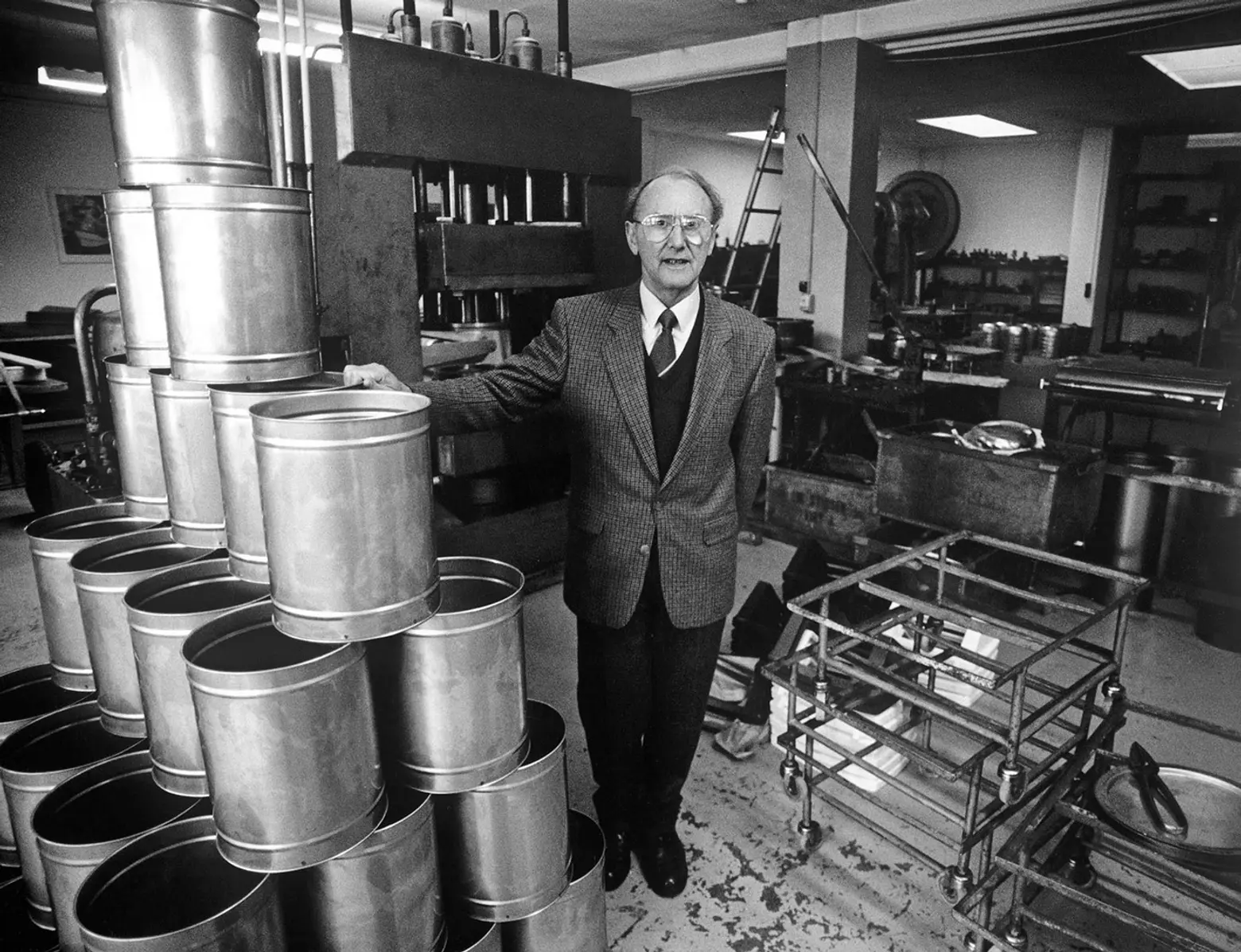
Founder Holger Nielsen; via Vipp
Can you explain how Vipp got its start?
The company was started in Denmark by my grandfather 79 years ago. He set out to design a trash can for my grandmother’s hair salon and the bin became so popular with her clients, who were the wives of many dentists in the area, that it became a business. He made them by hand in his workshop.


The bathroom is equipped with many Vipp products, including the soap dispenser, toothbrush holder, toilet brush and of course, the trash bin
Why did the company branch out to other products besides the trash bin?
When my grandfather passed, my mother took over the company. At first, expanding the client base to design-conscious companies like the Conran Shop in London, then my brother and I joined the business and started to look beyond the trash can. We are still very focused on the bin as the center point of Vipp DNA but noticed there were other needs that we could fulfill by expanding our footprint.
Have the needs of your consumers changed over the years?
Funny enough, no. I think the key word here is “needs.” Our wants may have changed but our needs haven’t. Vipp is about satisfying needs with design and providing solutions that last a lifetime. The design is deceivingly simple but the materials are robust. In the end, it is about an elegant, high-quality, high-functioning product.
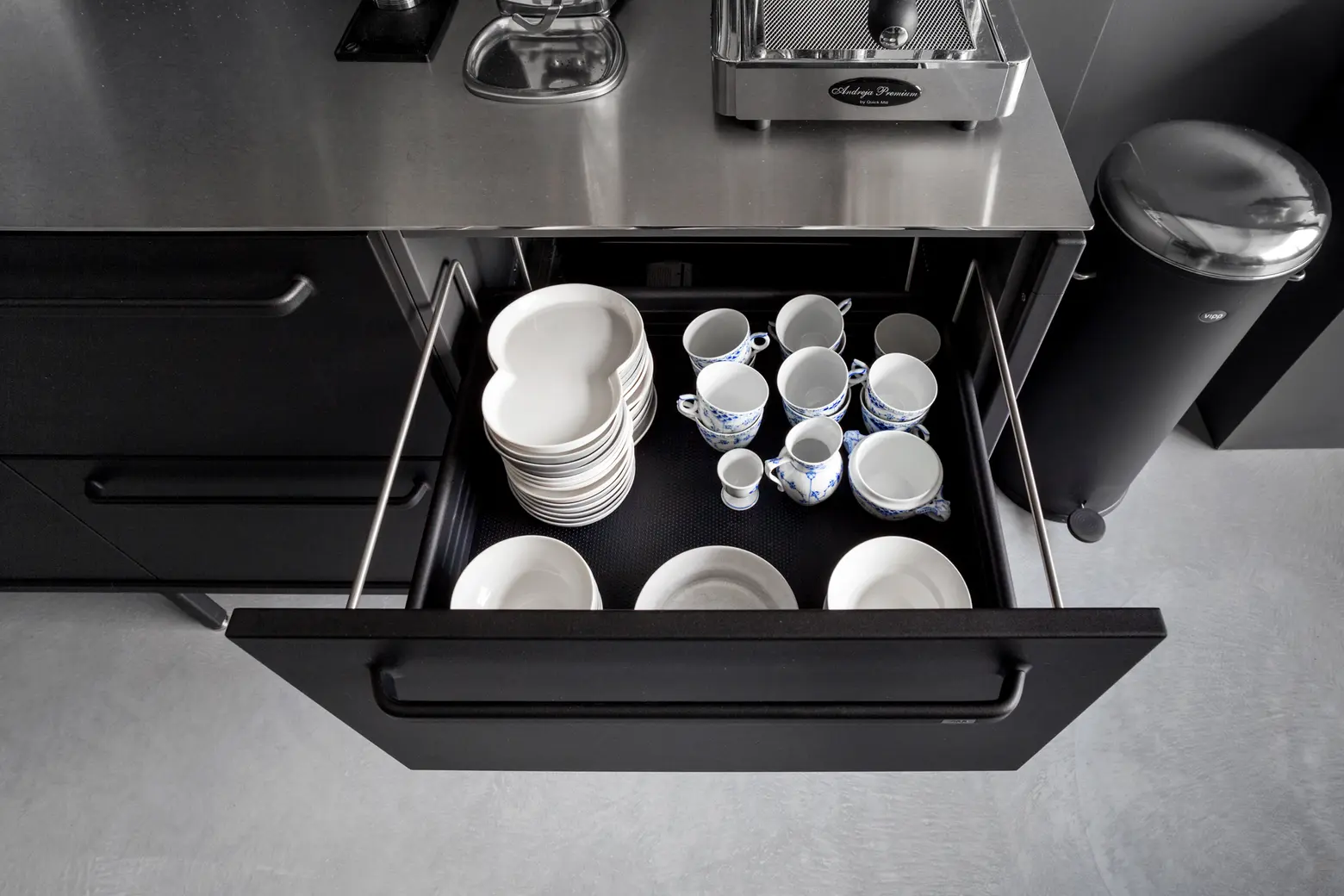
The plates, bowls, cups? All Vipp
Your products are designed to last. Why are functionality and endurance critical parts of your business model?
Absolutely. Functionality and endurance are in our company’s design DNA. We forever want these characteristics to define our work. It is a family business and we take pride in the work.


Your family moved from Copenhagen to New York City four years ago to open the first Vipp showroom outside of Europe. What are some adjustments you’ve had to make in a new city?
New York is an adventure. The city is forever in motion and a cacophony of sights, sounds and people. Because of this energy, it’s easy to fit in and find a rhythm that works for you. The funny thing we find curious is how large everything is – even simple things like food portions, waste (this market purchases larger trash cans), paper towels (our European sized paper towel holder is simply too small for the US). We’re still operating in a Danish way when it comes to these small things. Otherwise, we’re exploring and enjoying New York and the US in general.

Has it been difficult establishing a consumer base in New York City? How have you introduced your products to Americans?
As the saying goes, anything worthwhile is a process… Although we came from a place where everyone knows Vipp, we’ve been able to connect with a natural client base.
The first layer of business came from clients who are design-loving global travelers – like architects and people in fashion and interior or industrial design. From there the interest has grown consistently. The support from the architecture and design media has been a great help as well. This year news about Vipp is starting to spread beyond the audience we’ve cultivated, which has been exciting. Nevertheless, there is a long way to go but we’re up for the challenge and in this market for the long term.


For the design of the apartment-showroom, the couple was inspired by the galleries of Chelsea, down to the light switches
What was the process like of converting the factory into a showroom/ apartment?
The space underwent two rounds of renovation. We were part of the second where we changed a previous living space into an arrangement to suit our needs. My husband (who is a partner in the business) and I are very precise people. We like to take our time to get things right……it was a process……that took more time than we would have liked, but we are very pleased with the results. I would venture to say everyone who starts a construction project laments the process, but in the end it is worth it.

The lighting hanging in the children’s room is Vipp
And why did you decide to live in the showroom? What are some challenges your family has faced living in a showroom?
It wasn’t the original intention. We thought we would build a storefront showroom, but the opportunity to create a live/work space presented itself and we went with it. It has been a great help because we have children and the transition to living here was made easier for all because our days are integrated with work and family life. This sometimes can be a challenge if we have unexpected requests, but somehow it all works out.
Furthermore, clients appreciate the natural experience, we live with the products and it is easier to relate to their functionality by seeing pieces like the kitchen or the bathroom units in situ.
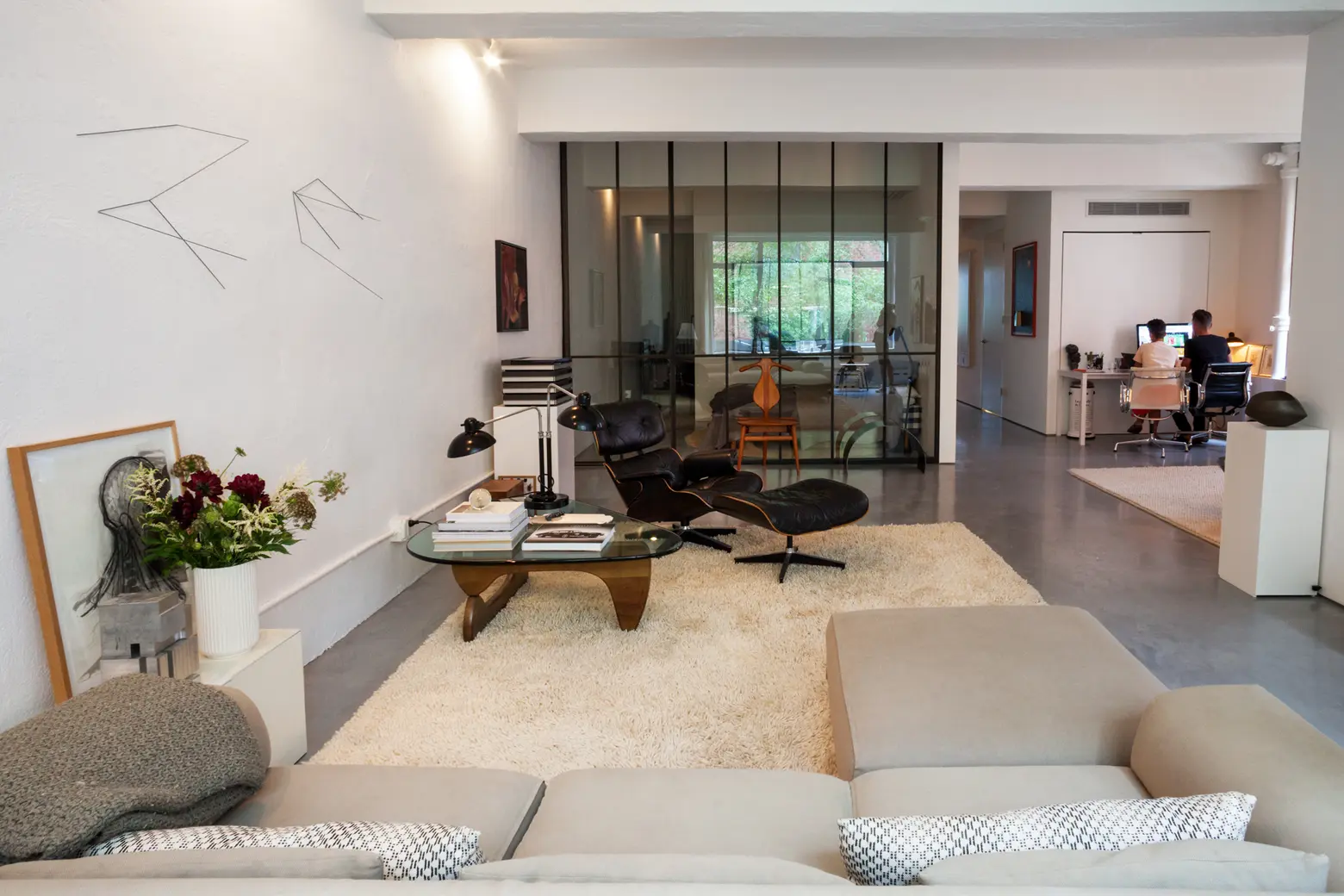

How would you describe the aesthetic of the showroom/ apartment?
We call it cozy, others call it austere. It is a matter of perspective. We are considerate of every purchase and collect furniture, art and objects that are meaningful. Our natural affinity for Scandinavian design is apparent as soon as you walk in. Our home consists of pieces of art and furniture that we have been collecting before and since my husband and I met 15 years ago.

These wooden dolls are gifted to Sofie and Frank’s eight-year-old daughter on each birthday

What are some of your favorite pieces of art or furniture in your apartment?
The pieces that mean the most to us are the ones with a good story – it can be inherited and holds memories from childhood, or it can be an object we stumble upon by coincidence or those that required a tough negotiation. We both love products with a story and that can last forever if you take good care. Our furniture is mostly vintage – a great part is still in production, but the pieces that are 25+ years old just come with a great ambiance.

What’s it like to work together as a married couple?
We have very different roles within the company, so there is a mutual respect for each person’s skill set. We happen to enjoy spending time with each other…so it helps and frankly, it’s fun to be on a journey like this with the love of your life.
What’s next for the company?
The Vipp kitchen was the start of a few big adventures including the design of The Vipp Shelter (our modular home), and then last year we launched a hotel concept that immerses our customers or fans of the brand in the Vipp lifestyle, and next year we look forward to celebrating eight decades of Vipp. We’re always looking at what’s next…stay tuned.
+++
This interview has been edited for clarity.
RELATED:
- Where I Work: Go inside NYC’s first sake brewery at Brooklyn Kura
- Roast, record, repeat: How Toby’s Estate brews the perfect cup of coffee at its Brooklyn cafe and roastery
- Where I Work: Tour FXCollaborative’s Flatiron architecture office with partner Dan Kaplan
All photos taken by James and Karla Murray exclusively for 6sqft. Photos are not to be reproduced without written permission from 6sqft.






